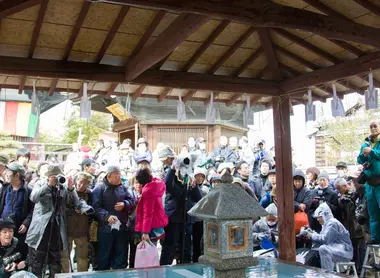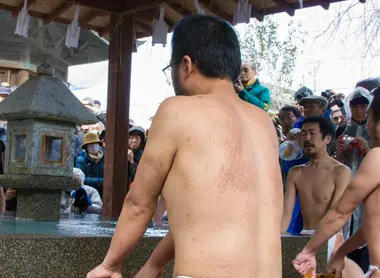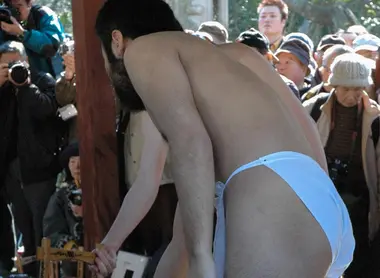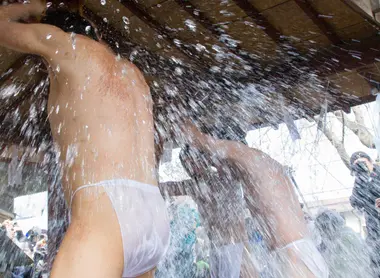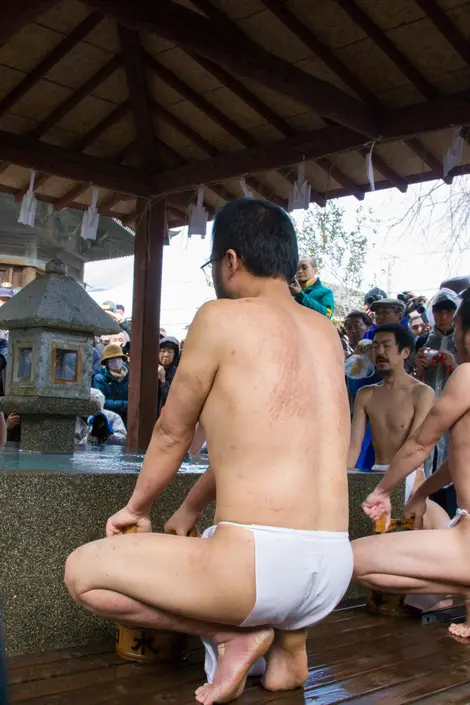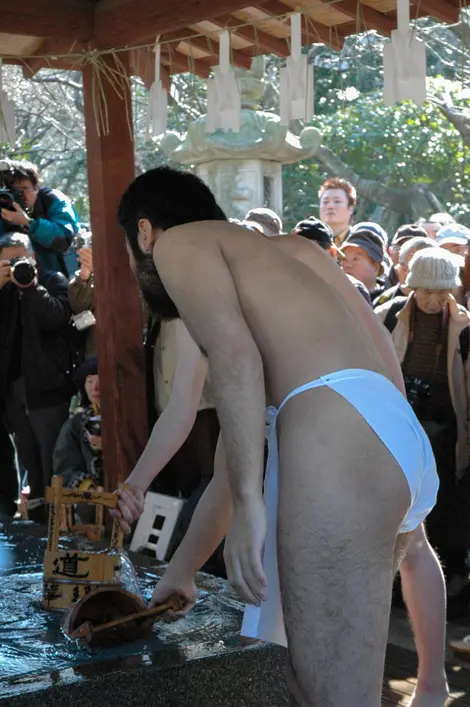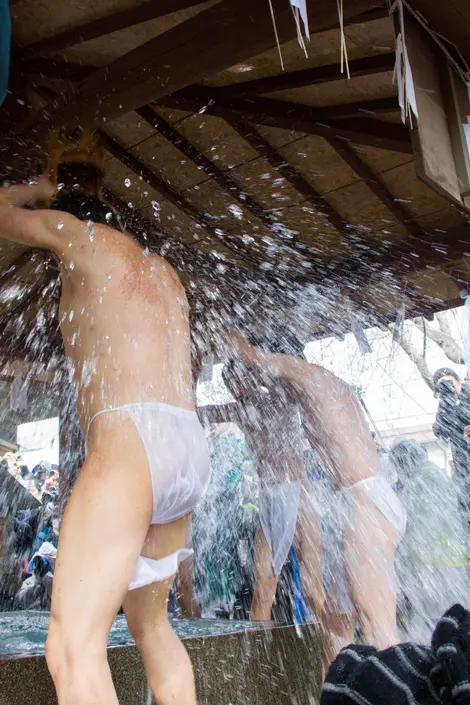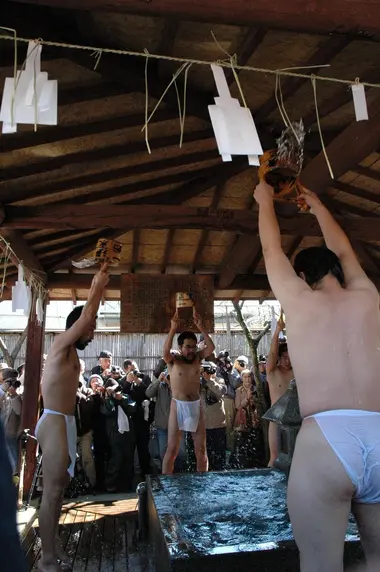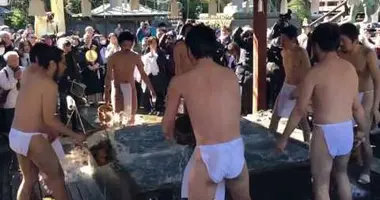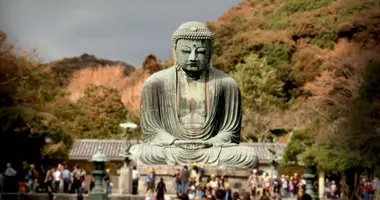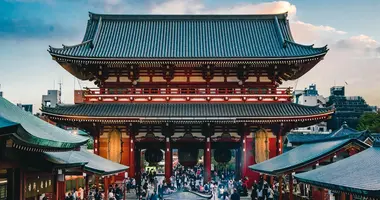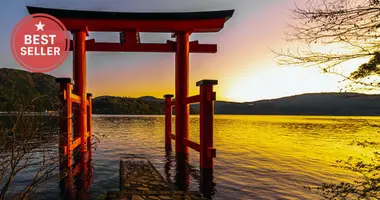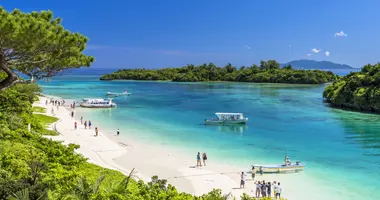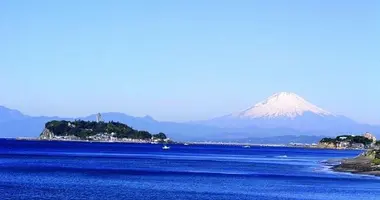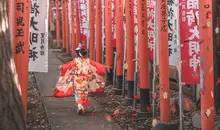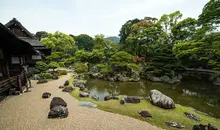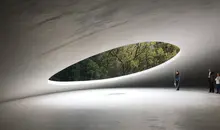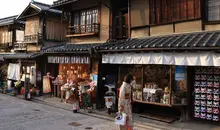The Daikoku To-E Ceremony 大国祷会
- Published on : 07/02/2018
- by : I.D.O.
- Youtube
austere discipline
In the dead of winter, after a hundred days of austere training, future Buddhist monks of the Nichiren sect douse their bodies with buckets of cold water, while chanting sutras during the Daikoku To-e ceremony (" austere discipline") at Chosho-ji temple in Kamakura.
On a freezing morning in mid-February, the courtyard of Chosho-ji temple in Kamakura is packed with people. Around a small basin, wooden buckets are installed. Amateur photographers are crowded there, bundled up in warm, waterproof clothes, their cameras protected by plastic. The other people, curious or fervent faithful, discuss. Suddenly, the crowd is silent as a small procession of men arrives, dressed in a simple light cotton tunic and a sort of loincloth wrapped around their waists. Arrived near the pool, they will take off their party clothes to keep only a simple piece of white cotton to use as a cache-sex. Their faces emaciated, they almost all wear beards. These men are future Nichiren Buddhist monks who are coming to the end of 100 days of asceticism practiced in the Myôjô-ji monastery located in Chiba.
Read : Myohon-ji Temple
Nichiren Daishonin
Born in what is now Chiba Prefecture, Nichiren Daishonin (1222-82) was a monk who founded his own Buddhist school based on the veneration of the lotus sutra, the Daimoku. Often critical of other Buddhist sects and of the military government of the time (led by the Hojo regents), he was exiled several times and even sentenced to death. According to legend, on the day of his execution, a miracle saved his life and he was pardoned. He lived and preached for many years in Kamakura , which was then the political capital of the country and where, later, many temples were erected in his honor. Today, Nichiren Buddhism is represented by different branches.
The "austere discipline"
Each year, a hundred young monks come from all over the country to do a 100-day retreat (from November to February) at the Myôjô-ji monastery where asceticism is the rule. Up at 2:30 a.m., they must “purify themselves” by spraying themselves with ice cold water seven times a day, in the heart of winter . They sleep less than 4 hours a night, spending their time reciting the Lotus Sutra and performing secret practices. They only eat porridge and miso soup twice a day and lose an average of 10 kilos. Their beard grows, their face grows hollow, their voice becomes deeper and deeper. They are preparing to be ordained monks after this compulsory retirement.
A final leap of faith
At the end of these 100 days of "austere discipline", they will prove their courage and their faith in front of the public, faithful and lay people, at the Chojo-ji temple in Kamakura, dedicated to their master Nichiren Daishonin.
After taking off their clogs, they enter, almost naked, hands clasped, into the sacred space of the pool. There are ten of them sitting around the latter and immediately begin to sing a text taken from the Lotus Sutra, the one they recited for hours and hours during their hundred days of asceticism.
See : The notion of "God" in Japanese
They sing for their personal salvation, to "purify themselves" but also for the salvation of humanity and for peace to reign in this world. As the final act approaches, the lyrics give way to simple sounds sung in chorus very energetically to give courage: "Hoi, ho, hoi, hoi...", the tone rises in crescendo until what with a common cry and gesture, they get up to take a bucket which they fill with water - the water in the basin which is no more than 5 or 7°C... They first sprinkle the chest a little bit with their hands, then the face to finally spill the whole bucket energetically on their head and body while continuing to sing.
Then they leave the pool, chilled, giving way to another group. The faithful pass them bath towels and their fine tunics before they leave one behind the other as they had arrived. Later, when everyone has proven their faith by these icy ablutions, a mass will be given in their honor and they can be ordained monks.
Address, timetable & access
Address
Phone
+81 (0)467-25-4300Timetable
About 25 meters on foot from the East Exit of Kamakura StationAccess
From 10 a.m. on February 11
